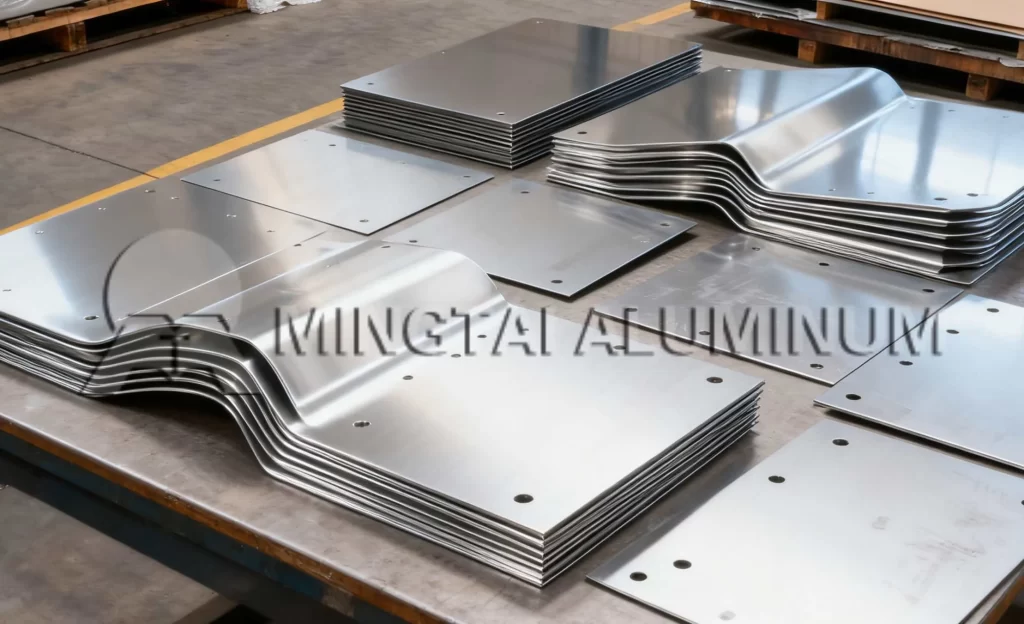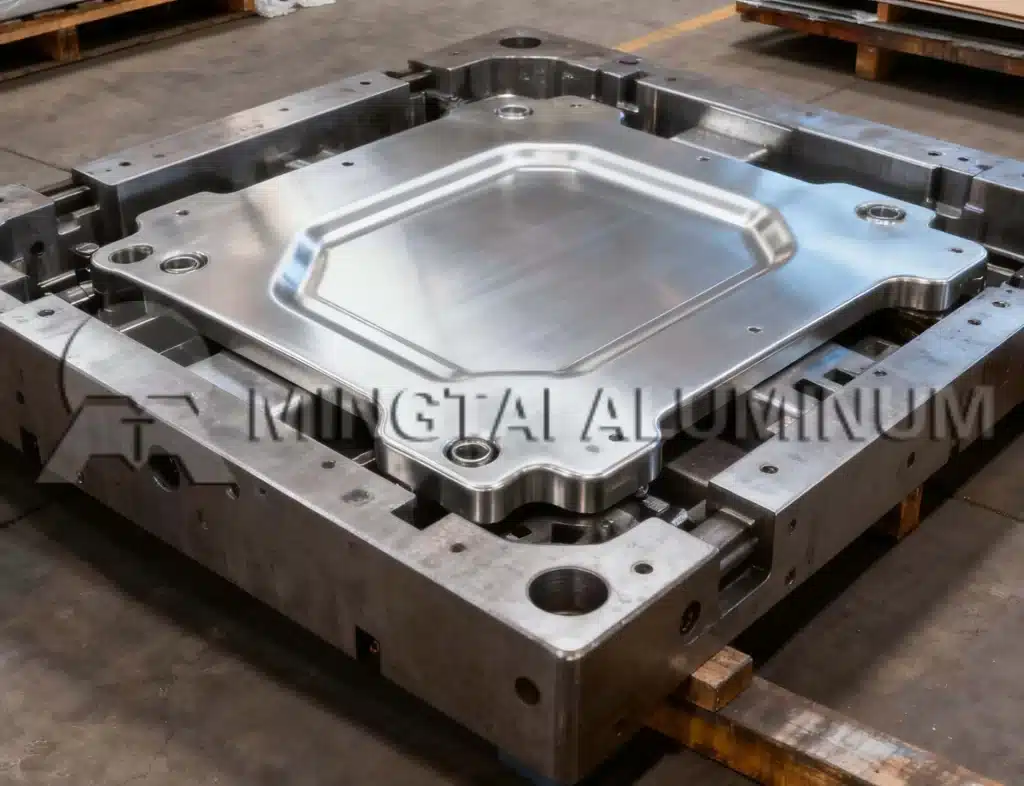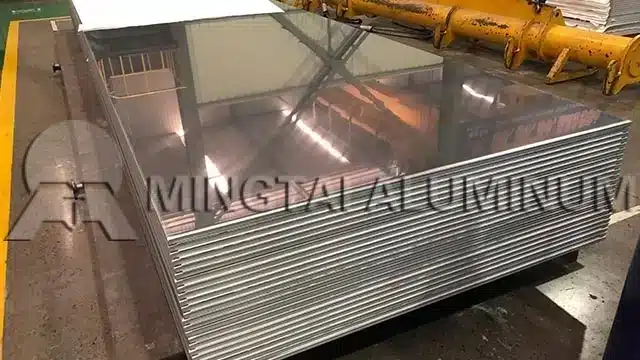
Precision engineering means building parts with super-tight tolerances and almost no variation. It’s a must in areas where a small mistake can wreck everything—like planes, cars, medical gear, and gadgets.
These fields demand rock-solid reliability, top performance, and safety. Materials are the foundation. They decide how well a part works, how long it lasts, and how easy it is to make.
Aluminum stands tall here. It blends traits that match precision needs spot-on. This piece shows why working aluminum sheets is a big deal in precision engineering. It digs into the metal’s features, smart ways to shape it, strict quality steps, and its green side. All this makes it a go-to for high-tech jobs.
The Properties of Aluminum That Make It Ideal for Precision Engineering
Lightweight and Strong
Aluminum wins big with its strength-to-weight balance. This counts in planes and cars. Dropping weight while staying tough saves fuel and boosts speed. Take 6061 Aluminum Sheet. It’s great for frames, base plates, brackets, and bike or car bits. Strength and lightness team up nicely.
Corrosion Resistance
Aluminum builds its own shield in air—an oxide layer. Rust stays away. Parts hold up in rough spots. 3003 aluminum sheet welds easy, bends well, and fights rust. Perfect for fuel tanks or chemical setups.
Thermal and Electrical Conductivity
Aluminum moves heat and power fast. This suits electronics and wiring. Heat escapes quick. Current flows smooth. Systems run steady.
Formability and Machinability
The metal bends into tricky shapes. Strength doesn’t fade. 6061 Aluminum Sheet fights cracks from stress. Welding and cutting are straightforward. Ideal for fancy, exact parts.
Aluminum Sheet Metal Fabrication Methods for Precision Engineering
Cutting
Laser and water jet cuts tackle aluminum sheets. They hit tiny tolerances. No heat bends or stresses the metal. Clean, spot-on cuts are a must for precision pieces.
Bending and Forming
Press brakes and rollers curve the sheets. Angles or bends form. The material stays solid. Good for parts that carry weight or move.
Welding and Joining
Aluminum calls for special welds because of heat. TIG welding rules here. It pins down the weld spot tight. Joints come out neat and tough. Critical for plane or car parts—failure isn’t allowed.
Stamping and Punching
These punch holes, slots, or dips. They handle big batches. Precision sticks. Great for detailed parts in bulk.
Quality Control and Testing in Aluminum Fabrication
Dimensional Accuracy
Parts have to match the blueprint dead-on. Coordinate measuring machines check every inch. Aluminum pieces slot in with others flawlessly. Key for medical or plane builds.
Surface Finish
A slick surface isn’t just pretty. In flow or light-based jobs, rough spots mess things up. Polishing or coating wipes out flaws. It’s a core quality move.
Non-Destructive Testing
X-rays or sound waves peek inside without breaking anything. They catch hidden cracks or weak spots. Parts stay trustworthy.
Post-Fabrication Inspection
Every finished piece gets a full once-over. Measurements line up with digital designs. This locks in specs. Parts head to build or ship.
The Role of Aluminum in Sustainable Precision Engineering
Recyclability and Sustainability
Aluminum recycles completely. No quality drop. This keeps it earth-friendly for engineering work. MINGTAI ALUMINUM grabbed certifications. Proof of eco-focus.
Energy Efficiency
Less weight means less energy. Transport loves this. Lighter parts burn less fuel. Aluminum helps slash emissions.
Low Environmental Impact
Aluminum leaves a smaller mark than many metals. It recycles forever and lasts. Smart production—like MINGTAI ALUMINUM’s German six-high cold rolling mill—cuts harm from start to end.

Working aluminum sheets matters huge in precision engineering. It brings light-but-tough build, rust-proofing, simple shaping, and perfect fit for exact processes. Cuts, bends, welds, and stamps turn out tricky, solid parts for demanding jobs. Tough quality checks—size scans, surface polish, and safe tests—hit every strict rule. Recycling and fuel savings make it green too. Planes, cars, medical tools, and electronics lean on it for spot-on, dependable pieces.
MINGTAI ALUMINUM is a big listed player in aluminum alloys. It turns out sheets, coils, and foils. Custom fixes for markets worldwide. For precision tasks chasing speed, exactness, and eco-smarts, add aluminum sheet work. It pays off clear. Team with pros like MINGTAI ALUMINUM. Grab quality stock, cutting-edge tools, and spot-on help for your project.
FAQ
Q: What are the benefits of using aluminum in precision engineering?
A: It’s light yet strong, rust-resistant, easy to shape and cut. Fits planes, cars, medical, and tech fields. Builds solid, high-end parts with super-tight fits.
Q: What are the common methods used in aluminum sheet metal fabrication?
A: Key ways: exact cutting (laser, water jet), shaping (press brake, roller), joining (TIG weld), and pressing (stamp, punch). All keep things accurate and top-notch for tough parts.
Q: How is quality controlled in aluminum sheet metal fabrication?
A: Checks include size scans with CMMs, surface smoothing for no defects, and safe tests (X-ray, ultrasound) to spot inside issues.
Q: Why is aluminum a sustainable material for precision engineering?
A: Full recycle, no loss in traits. Stays green. Light build saves energy on the move. Less fuel, fewer emissions.




